14 Types of Hawks in California (Pictures)
California is known for its diverse ecosystem, bird hotspots and supreme experience. So, birdwatching is one of the fun activities you can undertake easily.
Fortunately for you, the state is home to a dozen different types of hawks such as Red-tailed, Northern Harrier, Cooper, etc. All of these will leave you in awe of their elegance and beauty. So, let’s discover the diverse selection of hawks in California that you can spot!
14 Types of Species of Hawks Found in California
A mix of both migratory and resident birds can be found in the state of California; among them, there can be more than 14 species. Let’s take a look at each one of them.
Red-tailed Hawk
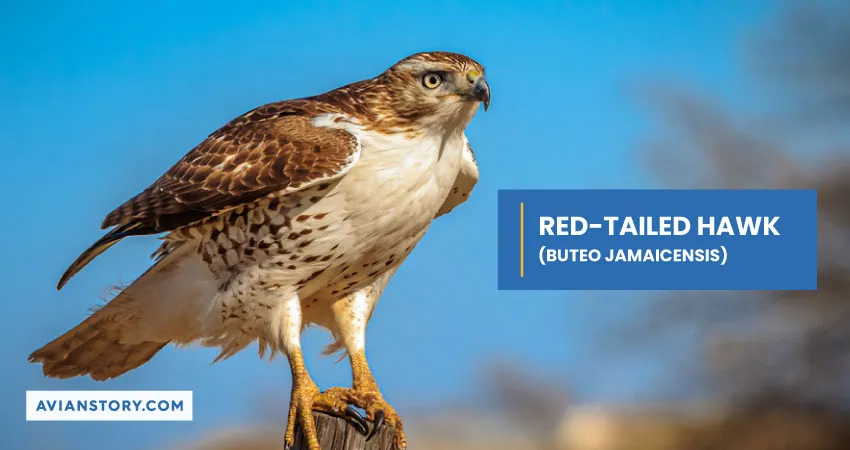
These are natural predatory birds that are the easiest to spot. The Red-Tailed hawk weigh around 2 to 4 pounds with dark brown to Grey-brown fur on their back and the top of their wings. However, they are distinguished by their distinctive red tails, hence the name!
Territorial in nature, these Hawks tend to mate and pair for life and remain together to breed while taking care of their nest extensively. The signature screeching call of the red-tailed Hawk is frequently utilized in movies and television shows to represent the calls of eagles and other raptors.
| Scientific Name | Buteo jamaicensis |
| Length | Male: 7.7-22.1 in (45-56 cm) Female: 19.7-25.6 in (50-65 cm) |
| Weight | Male: 24.3-45.9 oz (690-1300 g) Female: 1.8-51.5 oz (900-1460 g) |
| Wingspan | 44.9-52.4 in (114-133 cm) |
| Commonly Found In | Can be seen flying around in the countryside of California. Especially on the edge of woods and groves, but can also be spotted perched on trees giving them a proper hunting ground. |
Red-shouldered Hawk
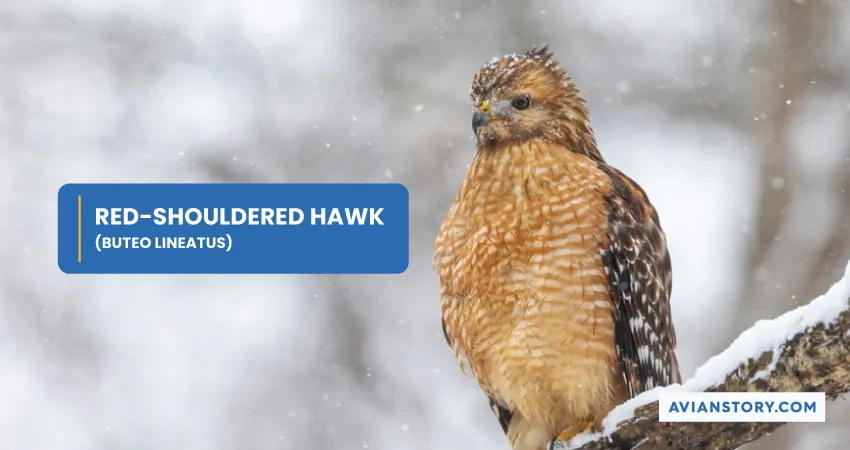
Second to the Red-Tailed Hawk, this species is the next most commonly spotted in California. Red-shouldered Hawks can be identified by their distinctive markings, which include reddish breast barring and wings with dark and white checkered patterns.
They have a tail that is heavily banded and medium in size. Additionally, they have a unique hunting style as they usually tend to drop onto their prey directly from high above.
| Scientific Name | Buteo lineatus |
| Length | 16.9-24.0 in (43-61 cm) |
| Weight | 17.1-27.3 oz (486-774 g) |
| Wingspan | 37.0-43.7 in (94-111 cm) |
| Commonly Found In | They can be easily spotted perched on trees and soaring high in the sky. However, their favored habitats include bottomland, forested stream banks, and marshes, where they usually tend to nest. |
Cooper’s Hawk
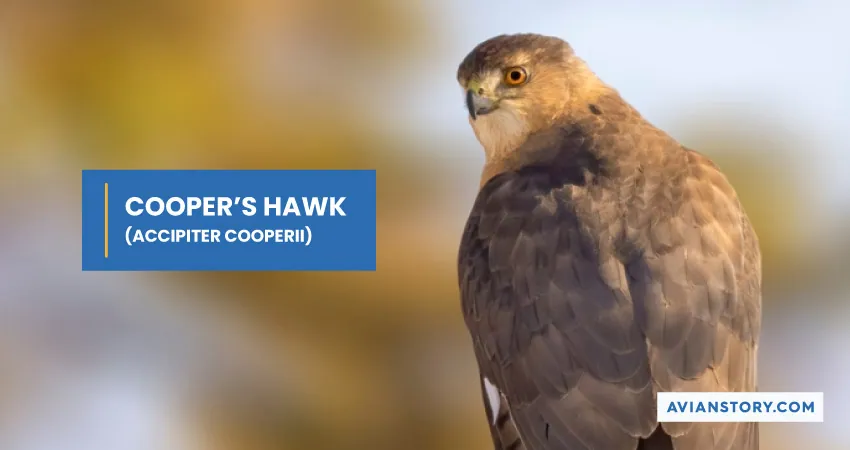
Besides having a dark-tailed band, they also have a blue-grey back and a reddish chest and tend to be smaller than other Hawks. Their diet mainly includes other small birds and mammals, and tends to be great fliers which makes it easier to catch prey despite their size.
| Scientific Name | Accipiter cooperii |
| Length | Male: 14.6-15.3 in (37-39 cm) Female: 16.5-17.7 in (42-45 cm) |
| Weight | Male: 7.8-14.5 oz (220-410 g) Female: 11.6-24.0 oz (330-680 g) |
| Wingspan | Male: 24.4-35.4 in (62-90 cm) Female: 29.5-35.4 in (75-90 cm) |
| Commonly Found In | These Hawks are resident birds of California and can be seen all around the year. They live in practically all habitats; however, the majority of them favor wooded areas. |
Northern Harrier
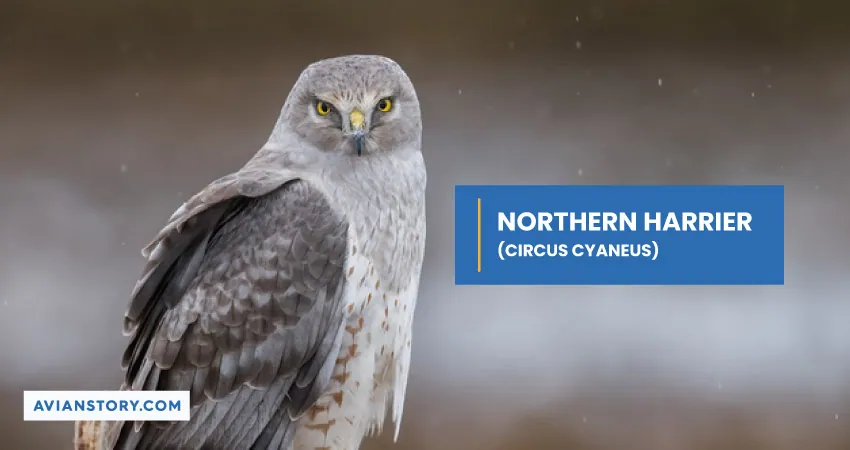
These Hawks have owl-like features and superior hearing, which aids in hunting for prey similar to that of Owls. They are the only Harrier species found in North America.
I find these hawks striking with distinctive profiles, including long tails and large wings on slim medium-sized bodies. These species frequently fly with their wings held in a V-shape.
Since they usually build their nests on the ground, breeding mates have to be extra diligent in protecting their partners and nests.
| Scientific Name | Circus hudsonius |
| Length | 18.1-19.7 in (46-50 cm) |
| Weight | 10.6-26.5 oz (300-750 g) |
| Wingspan | 40.2-46.5 in (102-118 cm) |
| Commonly Found In | The Northern Harrier can be spotted throughout the year in the state of California. They are mostly spotted in wide areas, including prairies, fields, and marshes, which are their preferred breeding grounds. |
Sharp-shinned Hawk
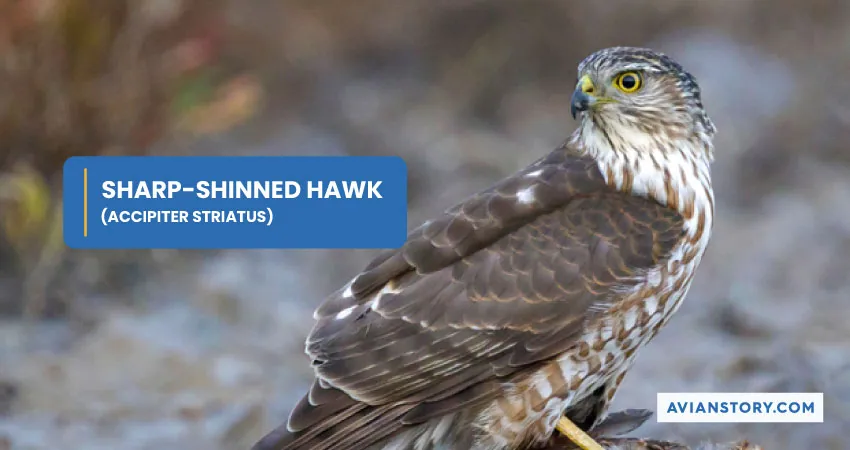
These are the smallest breed of Hawks that can be found in North America. Similar to the Cooper’s Hawk, the Sharp-shinned are shorter in nature, with long legs and tails, grey backs, ruby eyes, and orange breasts. They tend to be surreptitious in nature but can be spotted when soaring through the sky at the edge of the woods.
Also, they are quite agile notorious for prowling yard bird feeders and preying on the defenseless flocks of tiny birds that congregate there.
| Scientific Name | Accipiter striatus |
| Length | 9.4-13.4 in (24-34 cm) |
| Weight | 3.1-7.7 oz (87-218 g) |
| Wingspan | 16.9-22.1 in (43-56 cm) |
| Commonly Found In | These Hawks can be spotted in open fields and regions during non-breeding seasons. However, they tend to make nests in dense conifer trees in the woods during breeding seasons. |
Swainson’s Hawk

These Hawks are featured by long wings with pointy tips and a short tail along with their grey or brown backs and white bellies and brown chests. They can be seen in large flocks from May to September when they start their long migrating journey, which can be up to 6000 miles long!
However, these Hawks are one of the rarest in addition to their declining numbers. Open grasslands are the most likely regions to spot them hunting for small insects on the ground.
| Scientific Name | Buteo swainsoni |
| Length | 18.9-22.1 in (48-56 cm) |
| Weight | 24.4-48.2 oz (693-1367 g) |
| Wingspan | 46-54 in (117–137 cm) |
| Commonly Found In | The Swainson’s Hawks can be spotted most frequently in summer in California in open areas of grasslands or prairies during their breeding season. |
Ferruginous Hawk
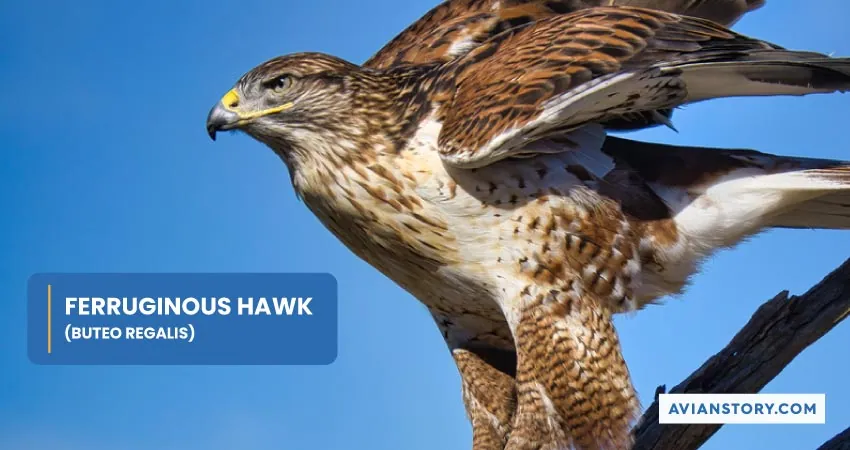
This species of Hawk is one of the rarest that can be found in California. In addition, you can only spot them in winter if you are lucky enough! These birds are characterized by large heads and majestic wings and can easily be considered one of the largest species of Hawks.
However, the numbers of these birds are also rapidly declining, with reportedly an estimation of 4000 pairs consisting of their existing population. They are known to build very large nests of 3 feet high to 3 feet across.
Most pairs of Ferruginous Hawks tend to be monogamous but can also roost in groups from time to time in winter.
| Scientific Name | Buteo regalis |
| Length | 22.1-27.2 in (56-69 cm) |
| Weight | 4.5-73.2 oz (977-2074 g) |
| Wingspan | 52.4-55.9 in (133-142 cm) |
| Commonly Found In | Ferruginous Hawks are most commonly found in open fields, grasslands, prairies, and deserts. |
Rough-legged Hawk
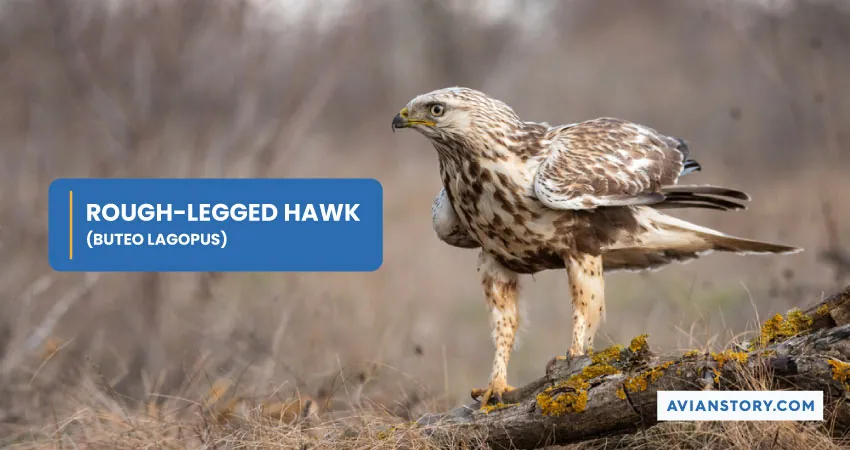
The Rough-legged Hawks are yet one of the larger species of Hawks found in addition to being rare. Their distinctive feathers on their legs make them visually different from any other type of Hawk, in addition to their unusually long and narrow wings.
They usually tend to be brown in shades with varying dark patches on their wings and tails. In the winter, their main food sources include voles, rabbits, squirrels, mice, and shrews. However, they themselves are prey to large birds such as Falcons and Golden Eagles.
| Scientific Name | Buteo lagopus |
| Length | 18.5-20.5 in (47-52 cm) |
| Weight | 25.2-49.4 oz (715-1400 g) |
| Wingspan | 52.0-54.3 in (132-138 cm) |
| Commonly Found In | The Rough-legged Hawks can be spotted in open fields, deserts, marshes, and through California during winter, especially in arctic regions. |
Northern Goshawk
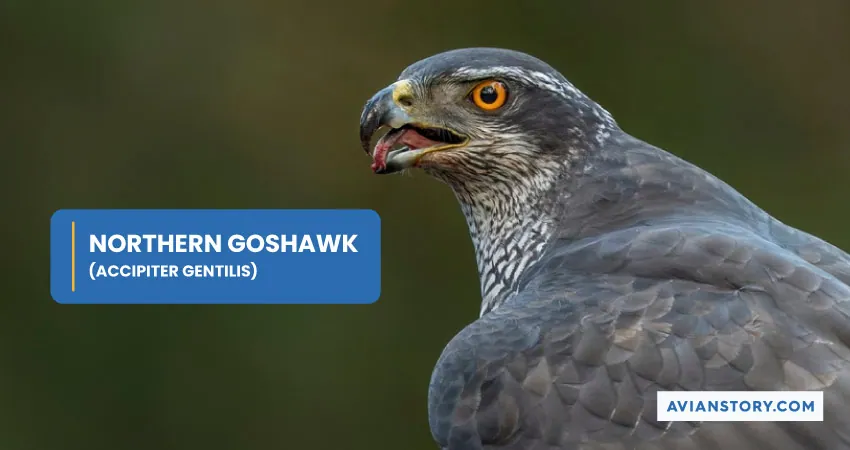
These ferocious and fierce birds are distinguished by their grey plumage and white stripes covering their golden or red eyes. They tend to stay away from civilization and stay in dense forests where they prey on small birds and mammals and build nests that they fiercely protect from any predators.
Now, they can be mistaken for Cooper or Sharp-shinned Hawks as they are closely related. However, the Northern Goshawk is larger and much more aggressive than its mellower relatives.
| Scientific Name | Accipiter gentilis |
| Length | 20.9-25.2 in (53-64 cm) |
| Weight | 22.3-48.1 oz (631-1364 g) |
| Wingspan | 40.5-46.1 in (103-117 cm) |
| Commonly Found In | They commonly tend to live and prefer large and dense mixed and coniferous forests where they usually build their nests. |
Broad-winged Hawk
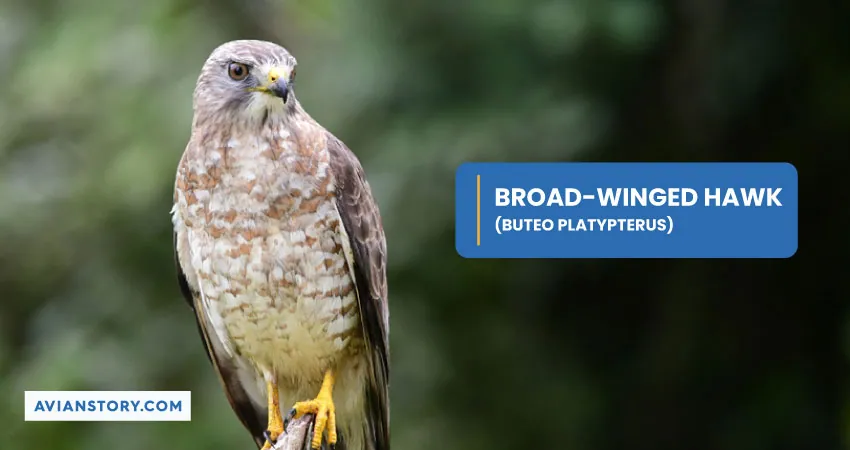
These are short and chunky birds with broad wings, which make them great fliers. They are yet again one of those hawk species who migrate long distances during winter, traveling an average of 4000 miles two times a year.
Wide-winged adult Hawks have broad black and white stripes on their tails, striped underparts, and dark red heads. These Hawks are known to pounce on their prey and rarely hunt when flying.
| Scientific Name | Buteo platypterus |
| Length | 13.5-17.5 inches (34-44 cm) |
| Weight | 9.3-19.8 oz (265-560 g) |
| Wingspan | 31.9-39.4 in (81-100 cm) |
| Commonly Found In | These birds can be frequently spotted in forests and under canopies which seems to be their preferred habitat location. |
Zone-tailed Hawk

These are striking Hawks and are almost dark brown or black in color with medium-sized bodies. Their preferred method of hunting is pouncing on their prey from above and catching them off guard.
Additionally, their stunning resemblance to Turkey Vultures and similar flight patterns enable them to imitate them and blend in with their flocks while hunting.
| Scientific Name | Buteo albonotatus |
| Length | 17.7-22.1 in (45-56 cm) |
| Weight | Male: 21.4-23.5 oz (607-667 g) Female: 29.8-33.0 oz (845-937 g) |
| Wingspan | 46.9-55.1 in (119-140 cm) |
| Commonly Found In | These birds can be most frequently spotted flying over deserts and scrubs and along high elevated regions such as cliffs and canyons, hunting for prey and tend to live in large trees. |
Gray Hawk
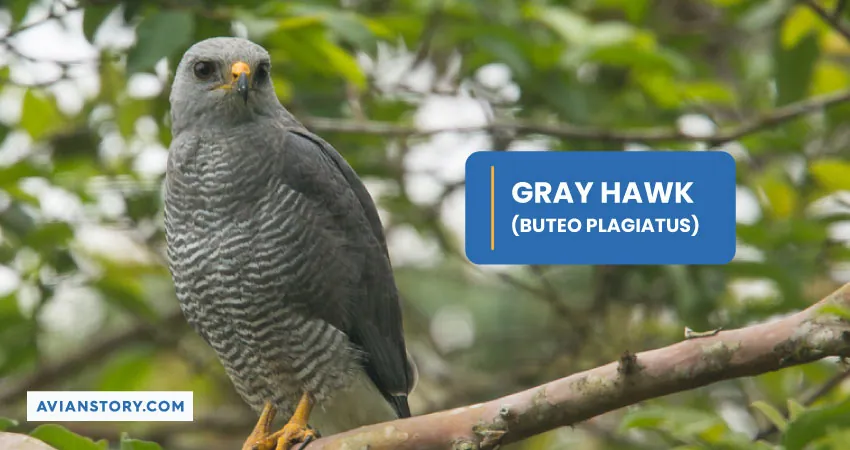
These Hawks are light grey in color with black and white long tails and broad wings. They are medium in size and fairly short in their family of species. Their size makes them prey on larger birds, such as Golden Eagles and Great Horned Owls.
They tend to hunt by pouncing from above on their prey and usually target lizards, small insects, and rodents.
| Scientific Name | Buteo plagiatus |
| Length | 18–24 in (46–61 cm) |
| Weight | 13.8-16.6 oz (391-470 g) |
| Wingspan | 32-39 in (82-98 cm) |
| Commonly Found In | Gray Hawks are primarily found in cottonwood and willow trees near rivers as well as savannahs. They can also be seen flying over wide-open spaces and poised on trees awaiting to strike prey. |
Common Black Hawk

As their name suggests, these hawks tend to be fully black, with the exception of a white stripe running across their tails. They are larger in size with broader wings and long legs but have shorter tails.
Despite having the term ‘common’ in their names, they are apparently not seen as, with only 250 pairs reportedly found in the US. They pursue fish, frogs, lizards, crabs, and other aquatic life in streams near wooded areas, but they will also chase songbirds and smaller animals.
| Scientific Name | Buteogallus anthracinus |
| Length | 17–21 in (43–53 cm) |
| Weight | 1.7-2.6 lbs (793-1200 g) |
| Wingspan | 48-50 in (122-127 cm) |
| Commonly Found In | These Hawks are frequently seen in lowlands rainforests, coastal mangrove swamps, and mountain rivers. They are typically found close to the water and reproduce on tall trees, particularly in cottonwoods. |
Conclusion
There are dozens of Hawks that can be spotted in California throughout the area. Some are resident birds and live and can be spotted all year round in different regions. In contrast, some are migratory Hawks that can be seen in different period of the year, particularly in their breeding seasons.
Regardless of the species, each Hawk has unique features and characteristics that set them apart from the rest. So if you are someone who is into birdwatching, California might be one of the places to go.
Hawks Found in Nearby States of California:
Relevant Resources:
- https://a-z-animals.com/blog/discover-the-14-types-of-hawks-in-california/
- https://www.allaboutbirds.org/guide/Broad-winged_Hawk/id
- https://wildlife.ca.gov/Conservation/Birds/Swainson-Hawks
Feature Image Credits: Susan E. Viera, Shutterstock
